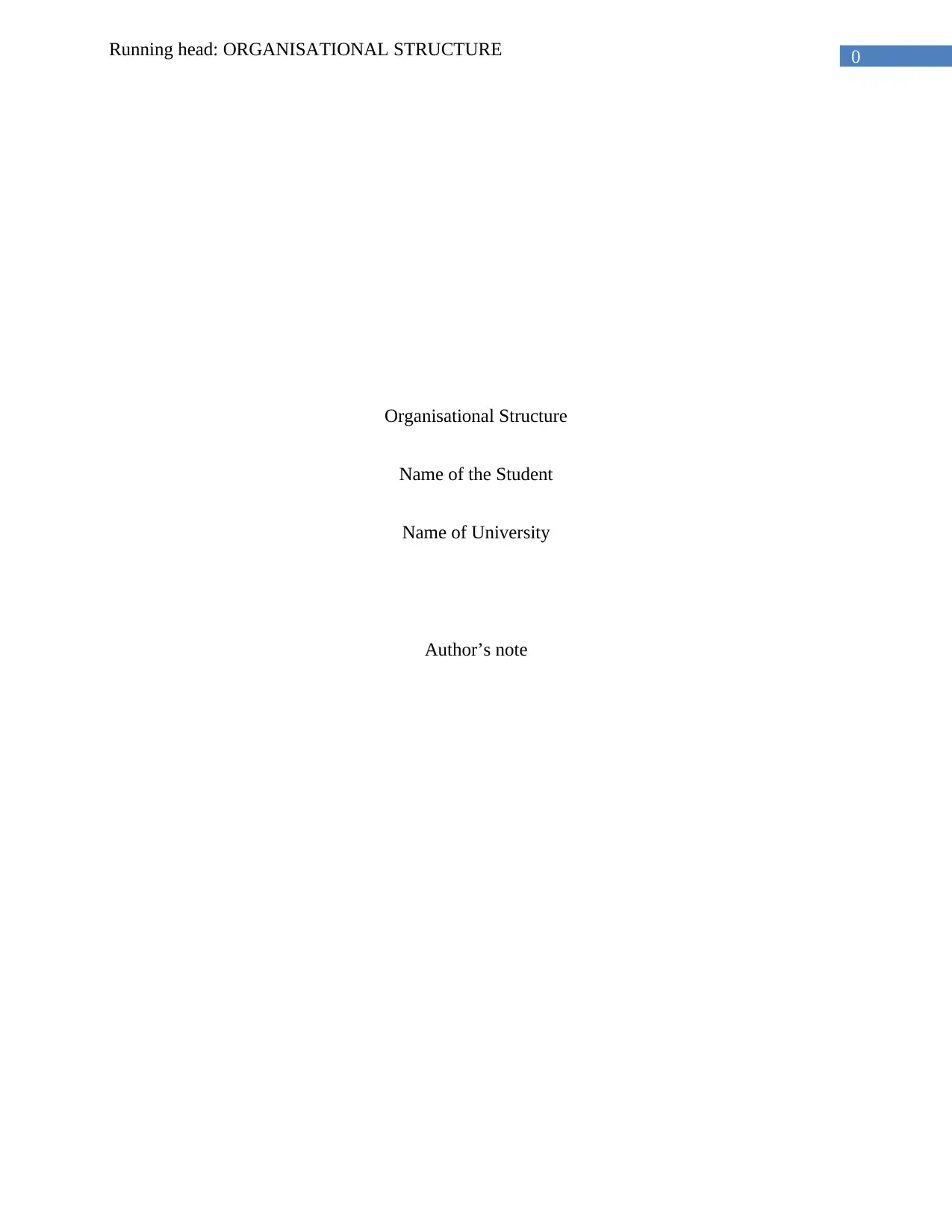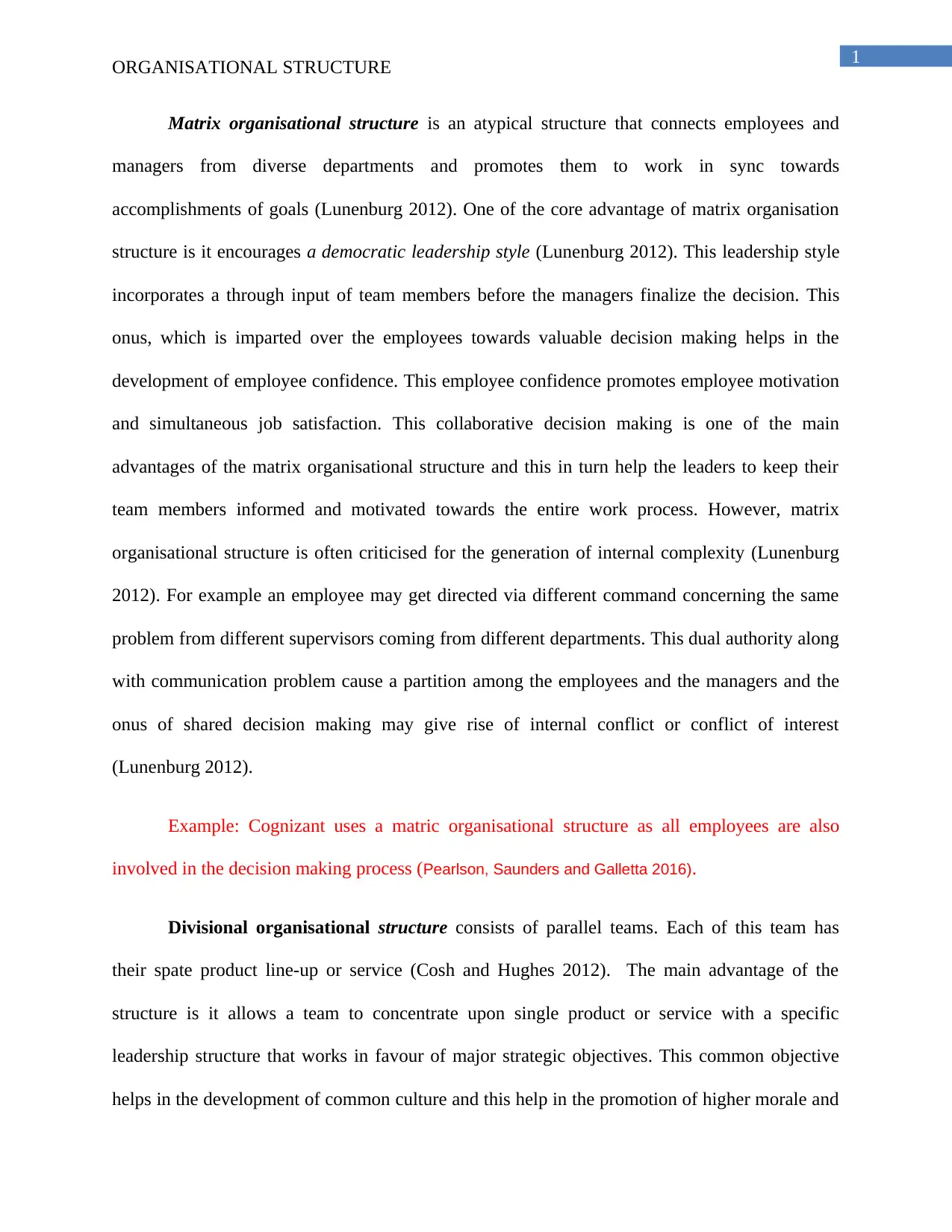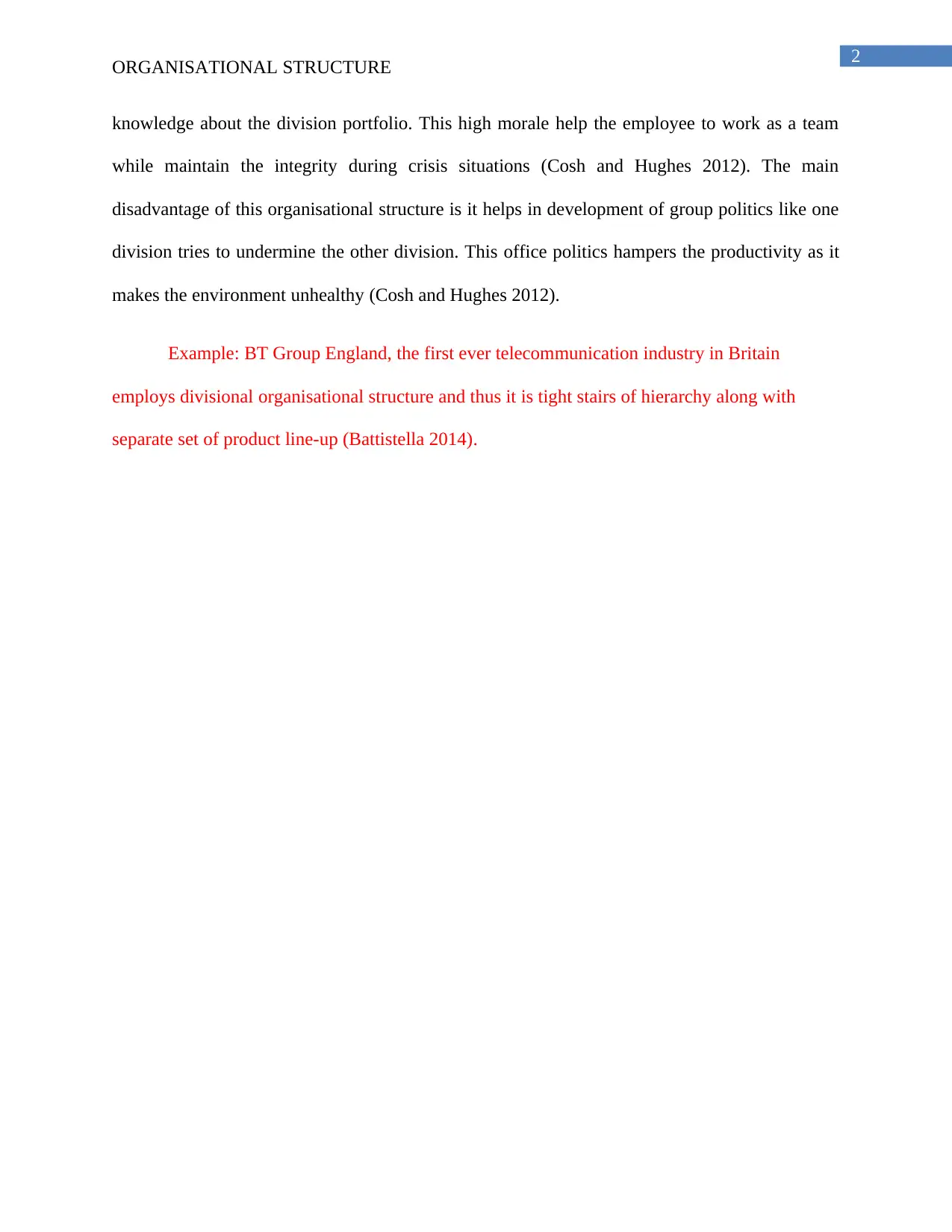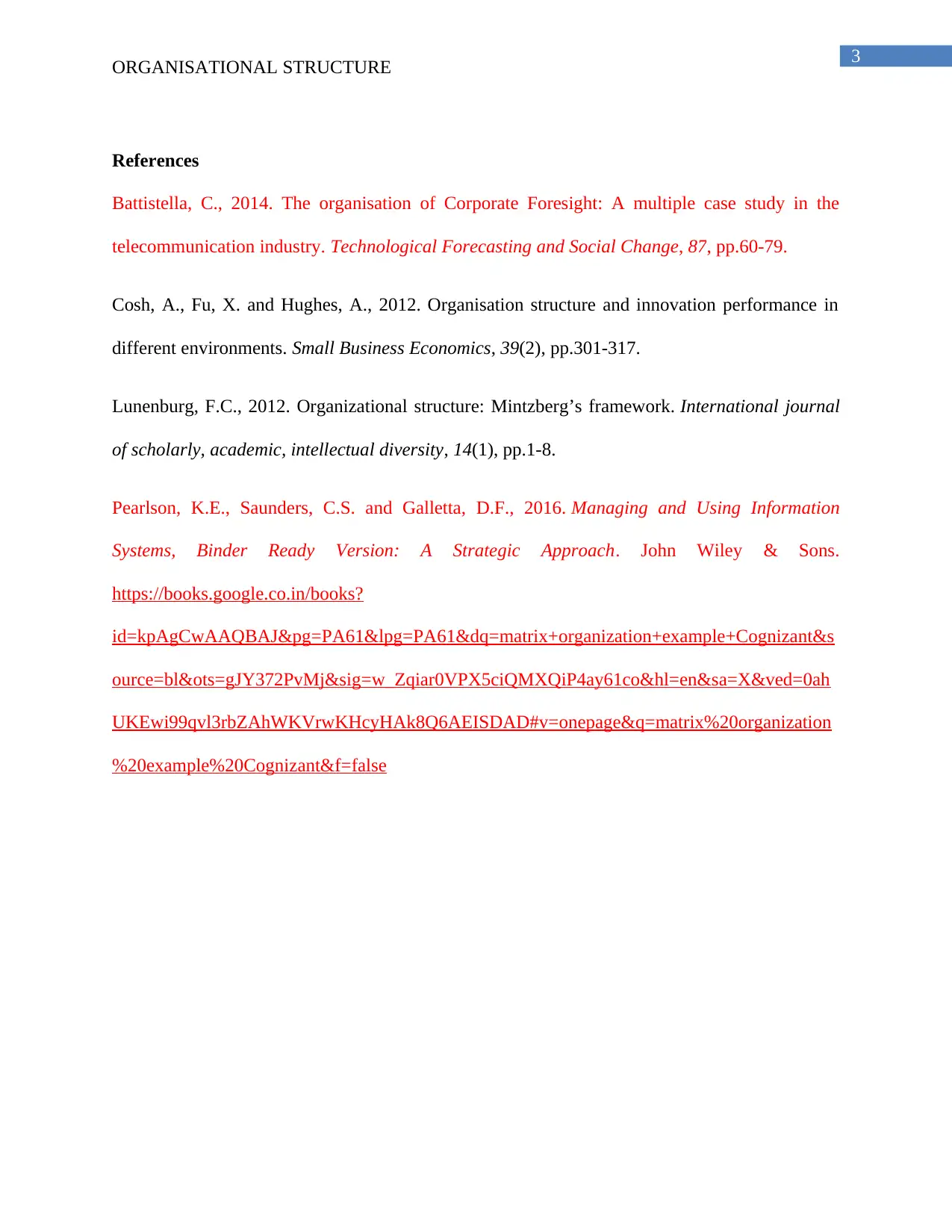A Detailed Review of Matrix and Divisional Organizational Structure
VerifiedAdded on 2023/06/15
|4
|630
|95
Essay
AI Summary
This essay provides an analysis of matrix and divisional organizational structures. It highlights that matrix structures connect employees from diverse departments, fostering democratic leadership and employee motivation, but may also cause internal complexity and conflict. Cognizant is given as an example of a company using a matrix structure. The essay then discusses divisional structures, noting their ability to focus teams on specific products or services, promoting higher morale and knowledge, but also potentially leading to internal politics. BT Group England is cited as an example of a company using a divisional structure. The essay concludes by referencing various academic sources that support the analysis of these organizational structures.
1 out of 4





![[object Object]](/_next/static/media/star-bottom.7253800d.svg)